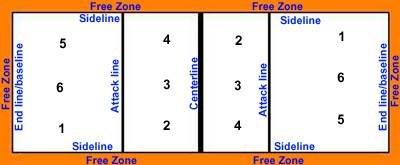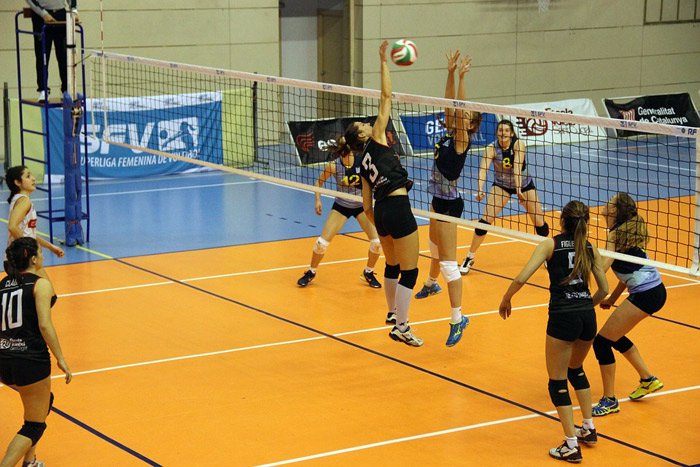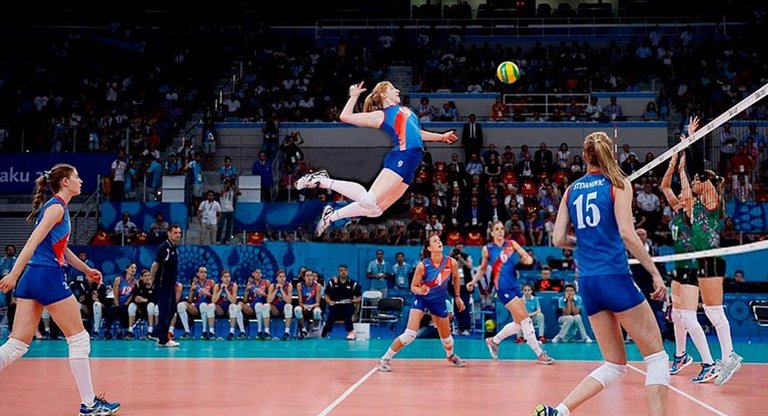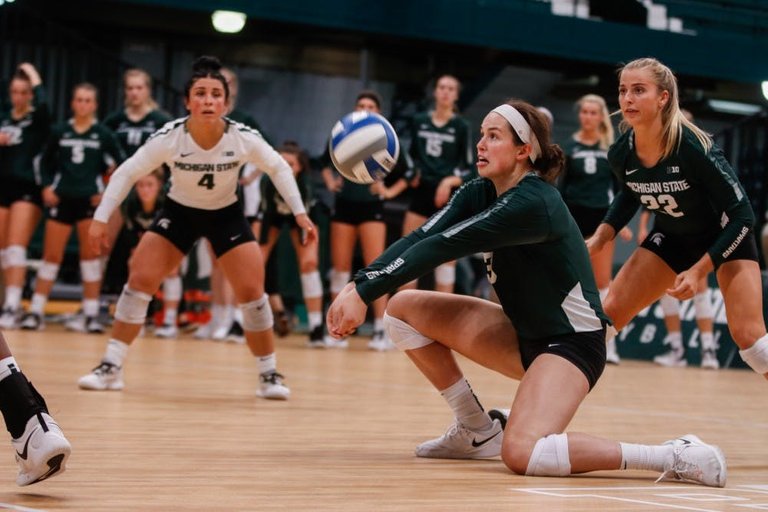Volleyball Game and it's Intricacies
Volleyball was invented by William Morgan in 1895. Volleyball is a game in which there are twelve players at a time. This means six players play for a team at a time. Each team has six players with other six for substitution. There are three forward and three back players. The choice of service is done by a toss of a coin. The captain who wins the toss first chooses the side of the court his team will occupy. After each round of game called set, the two teams change courts.
Facilities and Equipment for Volleyball
Volleyball court, net, ball, line flags, whistle, Jersey, canvas shoes, knee caps and socks
Positions of players in the volleyball field are as follows:

image source
Basic Volleyball Rules and Regulations
- Volleyball team is made up of six players and six substitutes. Each team has three front court players and three back court players
- The service is performed from the service area behind the end line. A player who touches the line while serving commits foot fault
- Players should not hit the ball without first throwing it upward. If a player touches the net it is a fault
No player is allowed to touch or hit the ball in play twice in succession - The ball must not be touched or hit more than three times in succession by a team before volleying the ball over the net to the other team
- A point is scored each time the non-serving team fails to return the ball over the net in a conventional way
The first team to score 15 points with at least 2 points ahead wins the set. The winning team must lead with 2 points ahead (17 – 15), (16 – 14), (15 – 13) and so on.
Volleyball Officials and their Duties
The Referee: The Referee has the whistle, he blows it to control the game. He makes sure the match is correctly conducted. He disqualifies any offending player after the second warning or for any gross misbehaviour. He sits or stands on a high platform overlooking the net from the top
The Umpire: He assists the referee in the conduct and control of the match. He regulates time-outs and substitutions. He watches out for centre line and net fouls, he stands on the floor opposite the referee in line with the centre net. He assists the referee to toss for choice of either court or service. He collects the ball whenever time-out is granted. He signs the score sheet.
The Scorer: The scorer positions himself opposite the first referee. He keeps records of points, number of substitutes, incidents and time-outs. He coordinates the players’ line-up. He controls the order of service and rational order.
The Timekeeper: He keeps accurate record of time-outs and time of play. He starts his timing clock at the beginning of each serve and stops it whenever the ball is dead. In some cases, he calls out the minutes to the end of a play at intervals of one minute, two, or five.
The Linesmen: Linesmen use flags for line-balls or balls that are out of bounds. They report rude remarks by players. Each controls a side-line and a base-line.




